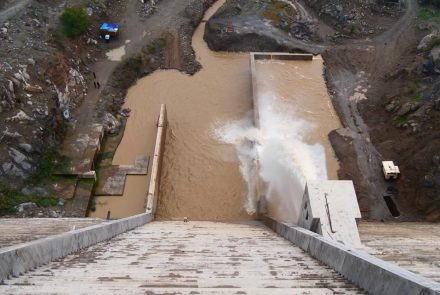After September 11, 2001, Afghanistan's economy did grow, but fundamental work in this sector was not done.
Afghanistan's GDP with the help of foreign assistance increased from $4 billion to over $20 billion during the past 20 years, and the international community has made significant financial contributions to the country.
According to the SIGAR report, the US has spent 145 billion dollars in the reconstruction of Afghanistan over the past twenty years, which is considerably more than the Marshall Plan's budget for the reconstruction of sixteen European nations.
"Our objective is that Afghanistan become a four-way energy transit,” said Ashraf Ghani, the former president of Afghanistan.
After 2001, a new chapter in Afghanistan's economy and politics was begun, and the foundation for the nation's reconstruction and modernization was prepared.
Until 2019, the majority of investments were made in the hotel, banking, transportation, communication, and aviation industries. This is a change from 2002, when the service sector predominated and the share of agriculture in the GDP was at its highest.
After 2014, the service industry experienced a decline as a result of the start of the withdrawal of foreign troops from Afghanistan, and many businesses in this industry went bankrupt.
The World Bank report shows Afghanistan's GDP from 2002 to 2014; the graph increases and reaches from 4 billion to 20 billion dollars, but then it declines once again.
Afghanistan's GDP per year according to World Bank’s report.
4 billion dollars in 2002
4.5 billion dollars in 2003
5.23 billion dollars in 2004
6.21 billion dollars in 2005
6.97 billion dollars in 2006
9.75 billion dollars in 2007
10.11 billion dollars in 2008
12.42 billion dollars in 2009
15.86 billion dollars in 2010
17.81 billion dollars in 2011
19.91 billion dollars in 2012
20.15 billion dollars in 2013
20.5 billion dollars in 2014
19.13 billion dollars in 2015
18.12 billion dollars in 2016
18.75 billion dollars in 2017
18.5 billion dollars in 2018
18.8 billion dollars in 2019
20.12 billion dollars in 2020
15 billion dollars in 2021
"This year's GDP is 14.9 billion or 15 billion dollars, which reached 20 billion dollars last year, showing a decline of almost 20 percent,” said Esmatullah Hakimi, deputy of the National Statistics and Information Authority (NSIA).
However, with the fall of the republic administration, Afghanistan's economy was abruptly on the brink of collapse; numerous infrastructure projects that had been started with government funds were not finished.
The "Shah wa Arus" water dam project was inaugurated by former Pesident Hamid Karzai in 2012, although it has not yet been completed.
After the 11th of September of 2011, the work of large regional projects such as CASA-1000, TAP and TAPI started, but none of these projects have not been completed yet.
“Today's ceremony marking the start of the implementation of the foundation base of the power transmission line CASA-1000 is for all of us a symbol of the beginning of real cooperation between the countries of the Central and South Asian region,” said Emomali Rahmon, President of Tajikistan.
The TAPI project, which was launched by the leaders of Afghanistan, Turkmenistan, Pakistan, and India in December 2015, was supposed to be operational by the end of 2019 but still has not happened.
The practical work on this project has been put on hold up until now, and it is unclear when the gas pipeline will pass through Afghanistan.


Comment this post